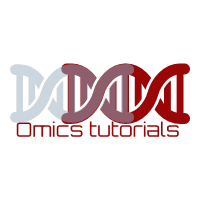
Bioinformatics glossary – I
November 9, 2018A | B | C | D | E | F | G | H | I | J | K | L | M | N | O | P | Q | R | S | T | U | V | W | X | Y | Z
Bioinformatics glossary – I

Idiotype
Antibody variants localized to the variable portion of an immunoglobulin that are recognised by their antigenic determinants. The determinants are composed from the antigen-combining site or CDRs. Every unique antigenic determinant has a specific antibody with its own unique idiotype.
Immunoglobulin
A member of the globulin protein family consisting of two light and two heavy chains linked by disulfide bonds. All antibodies are immunoglobulins.
in silico (biology)
(Lit. computer mediated). The use of computers to simulate, process, or analyse a biological experiment.
in situ hybridization
A variation of the DNA/RNA hybridization procedure in which the denatured DNA is in place in the cell and is then challenged with RNA or DNA extracted from another source. (See also fluorescence in situ hybridization).
The physical insertion of DNA into the host cell genome. The process is used by retroviruses where a specific enzyme catalyses the process or can occur at random sites with other DNA (eg. transposons).
Intracellular signalling
The communication of a molecular message from the surface of the cell to the nucleus via the participation of a series of molecules, including receptors, enzymes, proteins, and small-molecules. The end result of the signalling process is the up- or down-regulation of a particular series of genes that may be involved in cell growth, division or differentiation.
Introns
Nucleotide sequences found in the structural genes of eukaryotes that are non-coding and interrupt the sequences containing information that codes for polypeptide chains. Intron sequences are spliced out of their RNA transcripts before maturation and protein synthesis. (cf. Exons)
Isoschizomers
Two different restriction enzymes which recognize and cut DNA at the same recognition site. e.g Sma I and Xma I both recognize and cut the sequence CCCGGG.
Isozymes
Two or more enzymes capable of catalyzing the same reaction but varying in their specificity due to differences in their structures and hence their efficiencies under different environmental conditions.
Iteration
A series of steps in an algorithm whereby the processing of data is performed repetitively until the result exceeds a particular threshold. Iteration is often used in multiple sequence alignments whereby each set of pairwise alignments are compared with every other, starting with the most similar pairs and progressing to the least similar, until there are no longer any sequence-pairs remaining to be aligned.
















